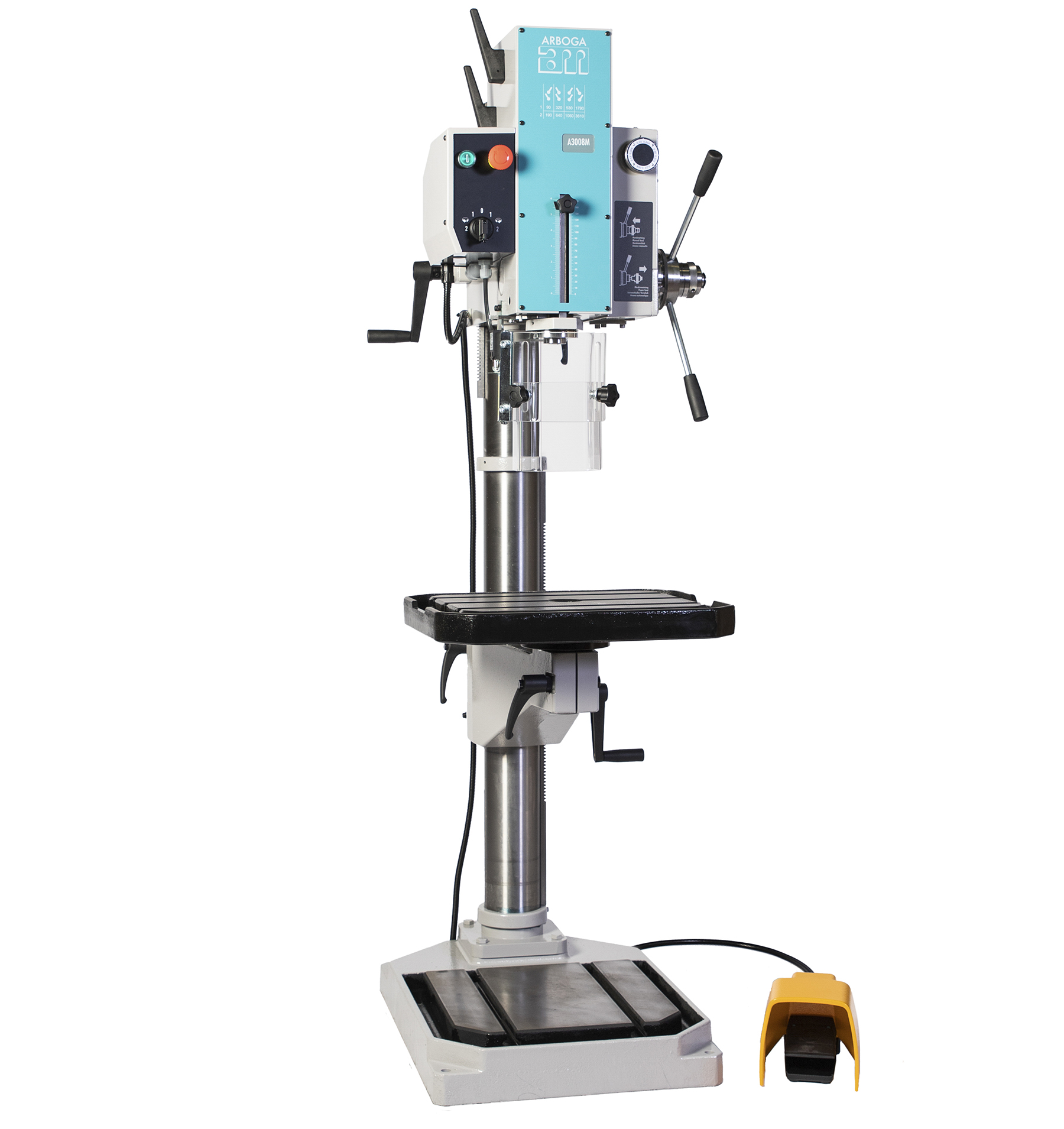On a crowded machine shop floor, it’s hard for a tool to stand out. It would need to be highly versatile, be able to tackle almost any project and feature exceptional strength. According to Palmgren, this is the case with its 25" Power Feed Gear Head Drill Press.
In this drill press, precision, power and versatility are combined thanks to a number of upgrades. The main feature is the new gear drive transmission, which allows a wider spindle speed range and more seamless speed changes between settings.
Historically, wide speed ranges come with the complication of losing power and torque on the top end. On other drill presses, Palmgren reports that drilling at the top speed can cause major reliability issues. Because the machines can’t offer enough torque, the cutting bit can seize, skip and chatter. The result is drill presses that can’t handle some projects.

“Not all drill presses are created equal,” said Ernie Torkilsen, vice president of sales and marketing for the fifth-generation family-owned manufacturer of metalworking machinery and shop equipment. “Palmgren’s drill offers far tighter technical specs and more precision than the most competitive drills on the market.”
Traditional drill presses require a V-belt to manually move to a different pulley. This typically involves loosening and re-tightening the motor before starting the drilling operation. All the while, torque is being lost. The tip of the cutting tool might see only 75% of the available torque.
“Our drill utilizes a different combination of gears to engage and obtain the desired speed,” Torkilsen said. “This is essential in order to match the size of the cutting tool to the material being drilled.”
With Palmgren’s design, a gear selector on the side of the machine moves the gear into position and allows the drill to run without manual adjustment. This permits 98% of the available torque to be used at the tip of the cutting tool.
The drill press includes either a 1.5 hp or a 2 hp, three-phase, 230 v motor that can handle spindle speeds between 90 and 3,610 rpm. The T-slotted table offers 20"×15.75" of usable surface with a 4" Palmgren drill press vise and more than 31" between the spindle and table.
The machine also features components that make operation easier for a machinist. A simple forward/reverse option enables users to change drilling direction with the flip of a switch. And a precision-mounted depth stop is easier to set and read, which makes setups faster and more consistent.
The drill presents convenient automation as well. An automatic spindle power feed performs cuts down to preset drill depths with a repeated accuracy of within 0.004".
According to Palmgren, in every drilling operation the speed of the cutting bit needs to be set to the perfect value. The speed setting determines which materials can be worked with, how deep a hole can be drilled and the diameters of holes that a press can drill.
With a wider speed range, a shop can handle a wider breadth of projects — from making tiny holes in titanium to making large holes in cast iron. If a single drill press can perform more projects, it will bring more value to a company. That was Palmgren’s goal when it put together this drill press.
“This design provides excellent speed versatility with a low range and a high range,” Torkilsen said. “This is due to our two-motor system. As a result, you’ll notice the widest range of speeds for drilling both large and small holes with no drop in torque.”
He said the drill press is more than adequate for most of the maintenance departments, fabrication shops, machine shops, tool and die shops and general manufacturing plants that he counts as customers.
“You can drill in all ferrous and nonferrous materials, composites and plastics,” Torkilsen said. “This drill can handle holes up to 1.25" in cast iron and 1.125" in steel, up to 5.5" deep.”
Contact Details
Related Glossary Terms
- chatter
chatter
Condition of vibration involving the machine, workpiece and cutting tool. Once this condition arises, it is often self-sustaining until the problem is corrected. Chatter can be identified when lines or grooves appear at regular intervals in the workpiece. These lines or grooves are caused by the teeth of the cutter as they vibrate in and out of the workpiece and their spacing depends on the frequency of vibration.
- composites
composites
Materials composed of different elements, with one element normally embedded in another, held together by a compatible binder.
- drilling machine ( drill press)
drilling machine ( drill press)
Machine designed to rotate end-cutting tools. Can also be used for reaming, tapping, countersinking, counterboring, spotfacing and boring.
- feed
feed
Rate of change of position of the tool as a whole, relative to the workpiece while cutting.
- metalworking
metalworking
Any manufacturing process in which metal is processed or machined such that the workpiece is given a new shape. Broadly defined, the term includes processes such as design and layout, heat-treating, material handling and inspection.


